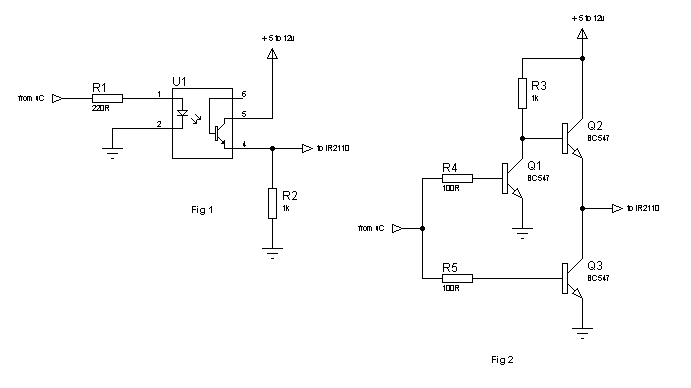vered&alon
Newbie level 3
hey all,
we have ir2110 gate driver with two power mosfets as it's switches.
the gate driver is connected to a TI microcontroller, who has logic '1'=3.3v.
as you can see in the datasheet attached, the gate driver expects Vih to get at least 9.5v, but the micrcontroller doesn't get that high.
does someone have an idea how we can solve this problem?
we really appriciate your help,
Alon & Vered.
we have ir2110 gate driver with two power mosfets as it's switches.
the gate driver is connected to a TI microcontroller, who has logic '1'=3.3v.
as you can see in the datasheet attached, the gate driver expects Vih to get at least 9.5v, but the micrcontroller doesn't get that high.
does someone have an idea how we can solve this problem?
we really appriciate your help,
Alon & Vered.
